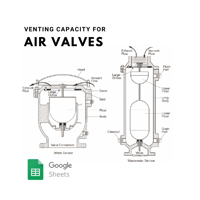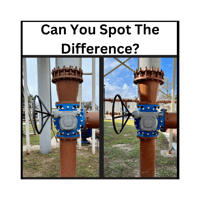High-Resolution Pressure Monitoring for Forcemains
Pipes that are buried underground are an important, but often overlooked, part of our infrastructure. However, when something goes wrong, such as a transient event or a leak, it can have serious consequences. Wouldn't it be nice to have a way to actively monitor our pipes and identify potential issues before they become major problems?
When dealing with wastewater, public health and the environment are always at the top of the list for a utility. One issue that can occur in forcemain systems is the rapid movement of transient waves through the pipes, also known as water hammer. These waves can travel at speeds of up to 4,500 fps depending on the type of pipe material. Ductile iron pipes have faster wave speeds, while PVC pipes have slower wave speeds.
Another thing to consider is restricted flows with older pipes. So as an example, if a rehab design of a lift station was calling for increased flow due to increased population, the forcemain itself would need to be analyzed. If a designer tries to just increase flow rate through an existing forcemain, your pressures will more than likely go up as well. One thing to be cautious of is that the energy in these pipes is proportional to the velocity through the pipe squared. Simply put, if you go from 3fps to 6fps, you now have 4 times the potential energy.
Flat forcemains can be prone to various transient events. It is important that forcemains are properly designed and installed to withstand transient events, as well as maintain system performances with the use of protective components such as proper check valves, air valves, surge-protection devices, and appropriate corrosion-resistant materials to prevent damage and ensure safe pipeline operation.
What happens at the lift station itself can be one thing, but what happens out in the forcemain can be a whole different story during a transient event. Below is an example of a pump shut down with a high-resolution pressure monitoring device from Syrinix installed on the header discharge at the lift station.
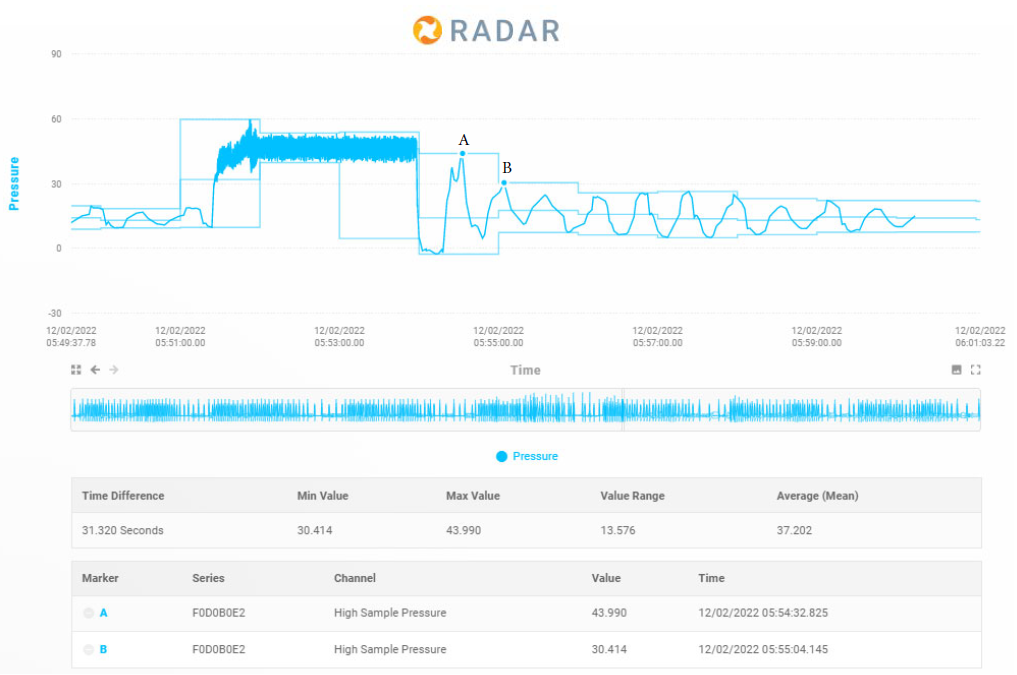
One of the many benefits to high-resolution pressure monitoring at the lift station is that it can give the design team the ability to calibrate a surge analysis for worst case scenario based on the actual field data, along with one pump or two pumps running which can also be identified within Syrinix's software, Radar. High-resolution pressure monitoring can be used for trouble shooting on an existing project, or even conducted after startup of a new system to fully validate the design. Fine tuning of a system can also benefit from this process as well. In most cases, a power trip is the most critical scenario that generates the most extreme pressures in a system, especially with multiple pumps running.
Below is a simulation of what could be happening out on the forcemain itself since this often goes unseen once a system is installed. This animation is produced from KY Pipe which is a surge analysis software. Analyzing forcemains and pipelines with a proper surge analysis is the preferred way to help mitigate potential issues. Model calibration would be the final step to complete a true all systems go within the model itself. On a forcemain specifically, the data captured in the field from a high-resolution pressure monitoring device will help calibrate the surge analysis.
What do we do with all of this data you might ask, being collected at a rate of 128 times per second, 24/7? The magic all happens within Radar. Additional benefits of ongoing high-resolution pressure monitoring within Radar include identifying pipe breaks, pump performance problems, valve issues, blockages, and potential air pockets. Radar is your second set of eyes with the algorithms running in the background. Early detection is key and with a tool as such, you are able to take action much sooner than waiting for a call to come in or worse yet, days go by before anyone notices something. Some examples of what can be seen or detected:
Check Valve Slam 👇
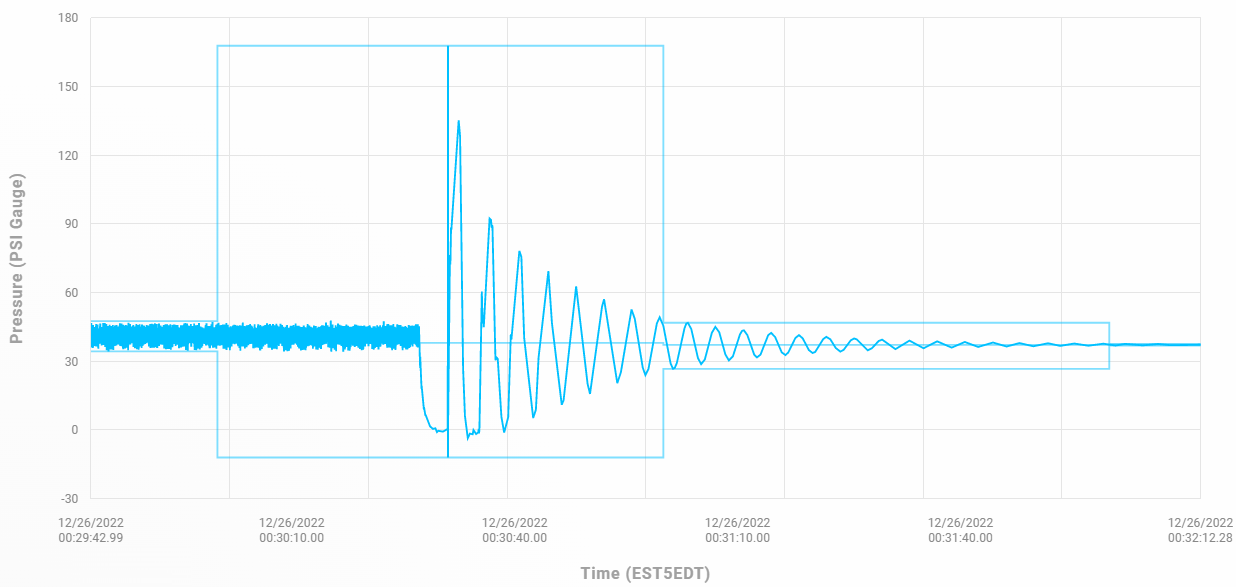
Break Alert 👇
![]()
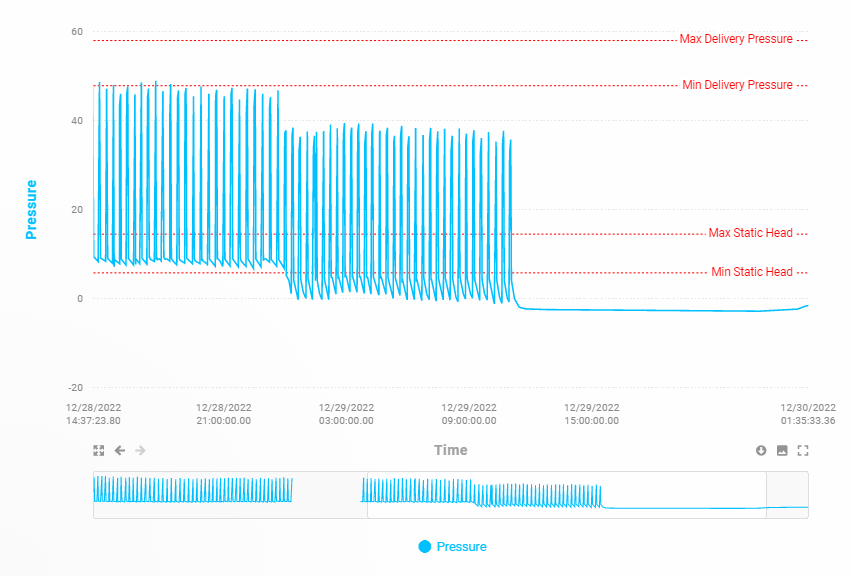
Low Delivery Pressure 👇
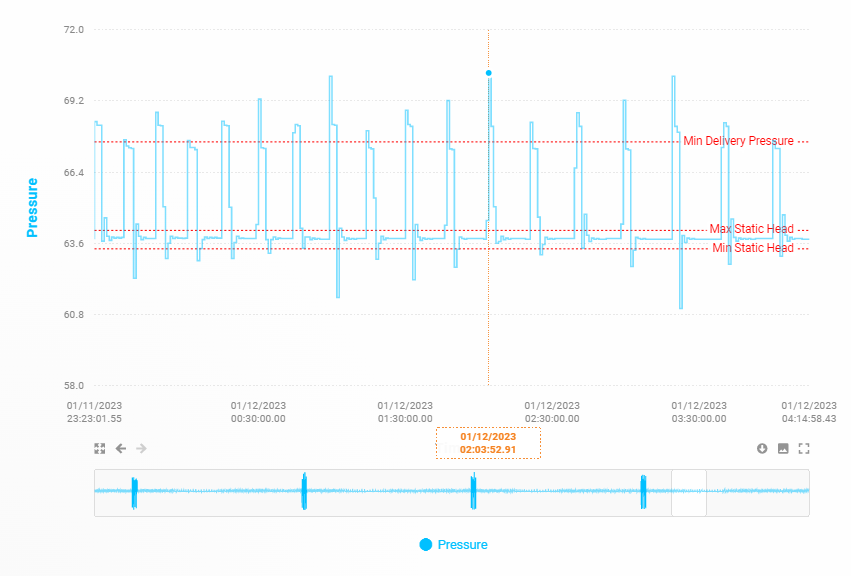
Pump Performance Problems (possibly good pump / bad pump scenario) 👇
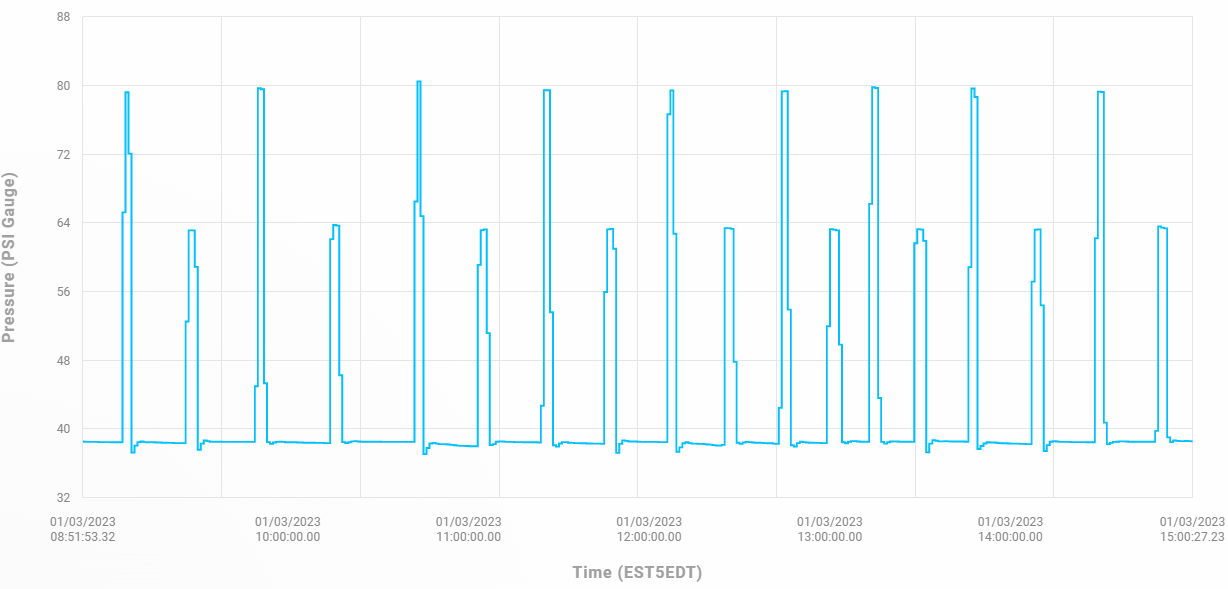
Suspected Air Pockets 👇
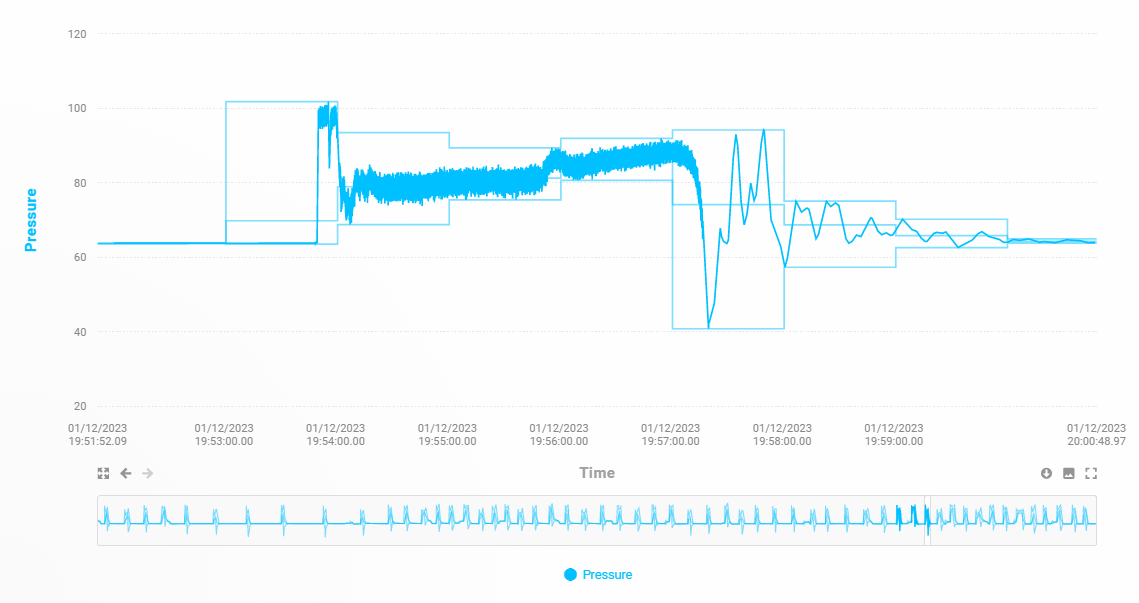
There are many benefits to high-resolution pressure monitoring. Bringing in additional data such as flow meters and pump run times overlaid with the high-resolution data within Radar is a game changer for a utility. This ability can help you avoid costly fines, reduce the risk of pipe and pump failures, increase the lifespan of your assets, and improve energy efficiency. It can also help you identify breaks quickly, reducing the impact and repair costs, and optimize your capital expenditure for maintaining pressurized sewer networks.
In conclusion, monitoring the pressure in your forcemain systems with a high-resolution pressure monitor can help keep your systems running smoothly and efficiently. If you are interested in learning more about forcemain monitoring, please visit our website at www.environmental-md.com or www.syrinix.com/us.
Perhaps you have an interest or need for your raw, reclaimed, or potable water system in lieu of a forcemain system. There are may angles to discuss on this subject, including triangulation when coupled with GIS shapefiles. Oh, the power of innovation, data, and working together as a team.
Curious about having a surge analysis preformed or want to get pointed in the right direction? Feel free to visit our surge analysis page to learn more. Until next time, cheers!


